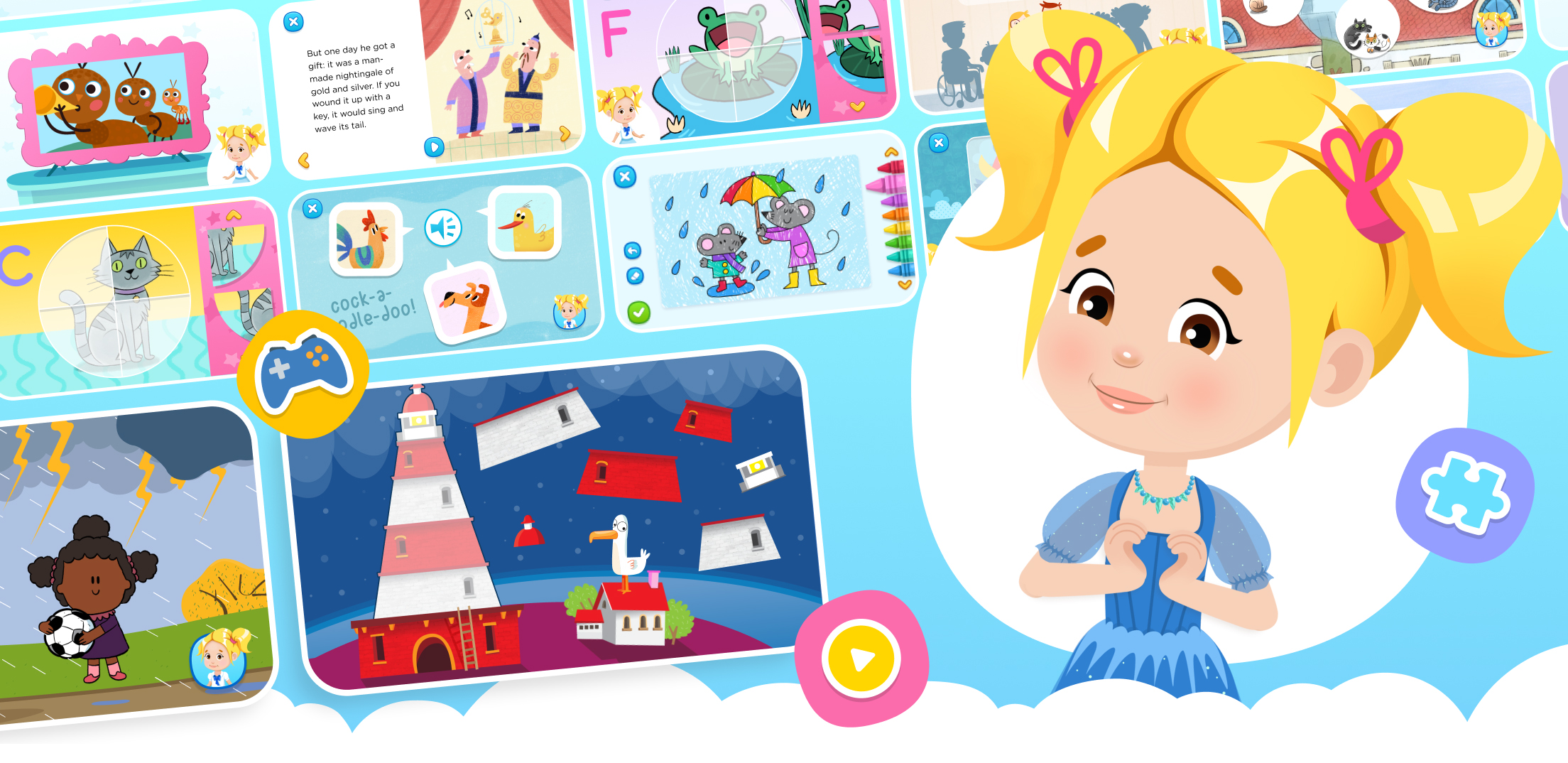Verb identification Worksheets for Ages 5-7
7 filtered results
-
From - To
Welcome to our Verb Identification Worksheets, specially designed for children ages 5-7! These engaging worksheets will help young learners recognize and understand verbs, the action words that are vital for building sentences. Through fun activities, colorful illustrations, and age-appropriate exercises, children will develop essential language skills and boost their confidence in using verbs. Our interactive worksheets encourage critical thinking and creativity, making learning enjoyable. Whether at home or in the classroom, our resources provide a perfect way to reinforce verb identification skills. Explore our collection today to support your child's literacy journey and lay the foundation for effective communication!
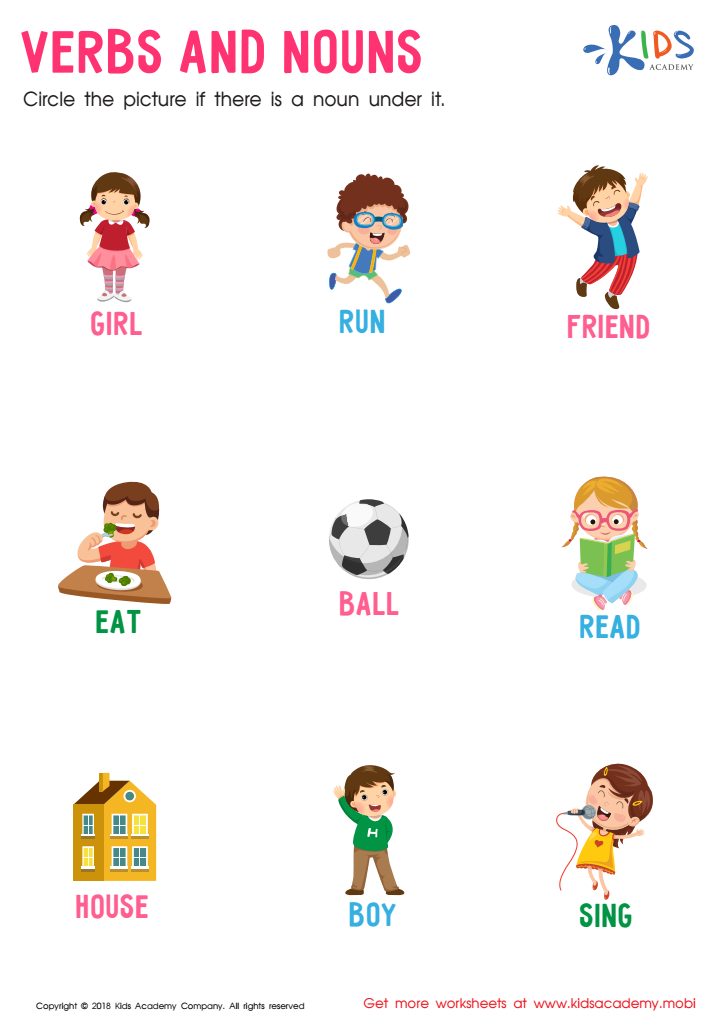

Verbs and Nouns Worksheet
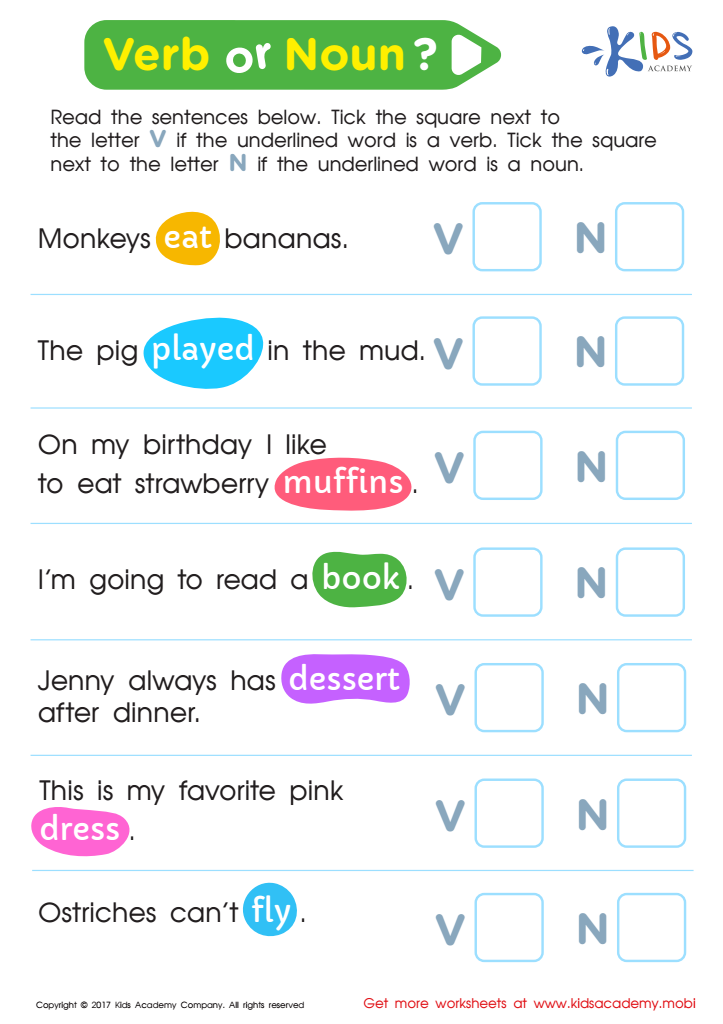

Verb or Noun Worksheet
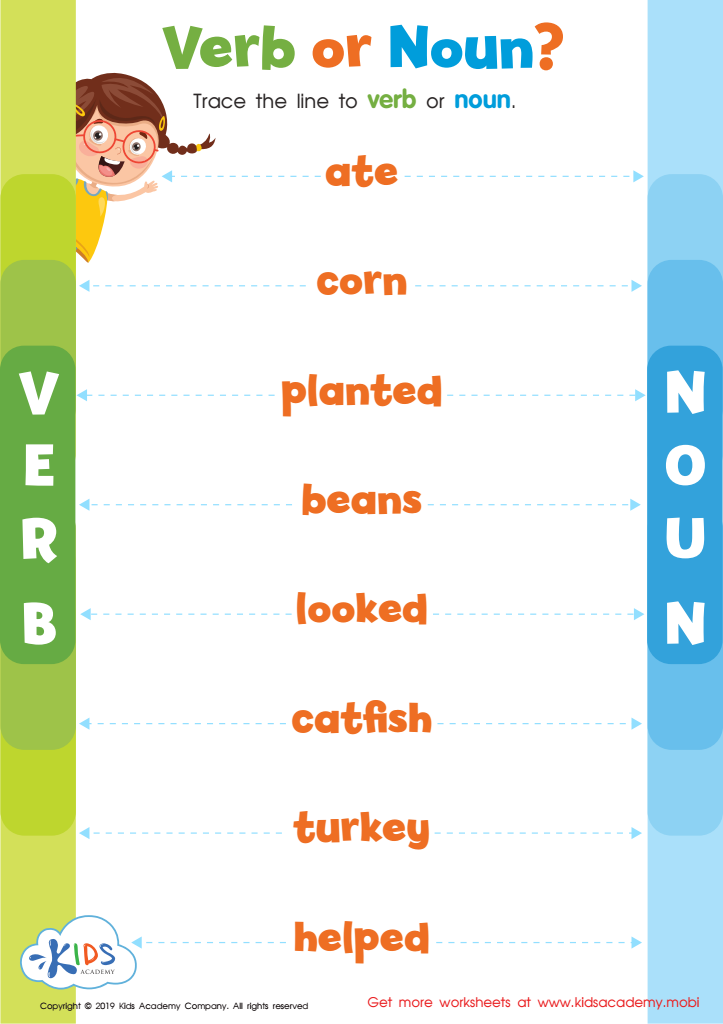

Verb or Roun Worksheet
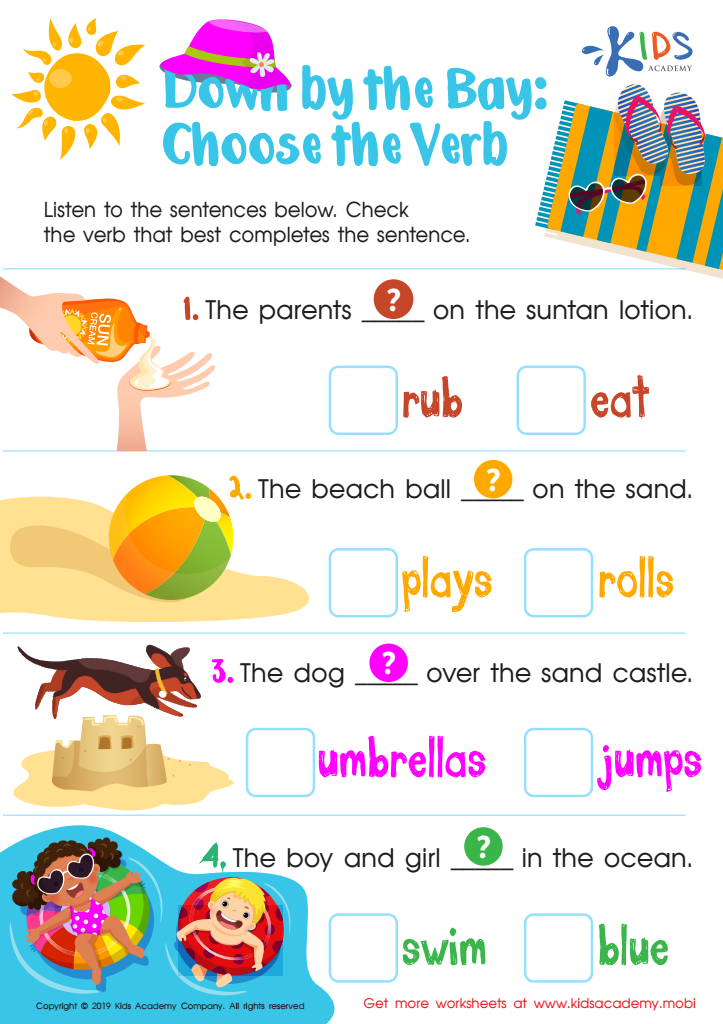

Down by the Bay: Choose the Verb Worksheet
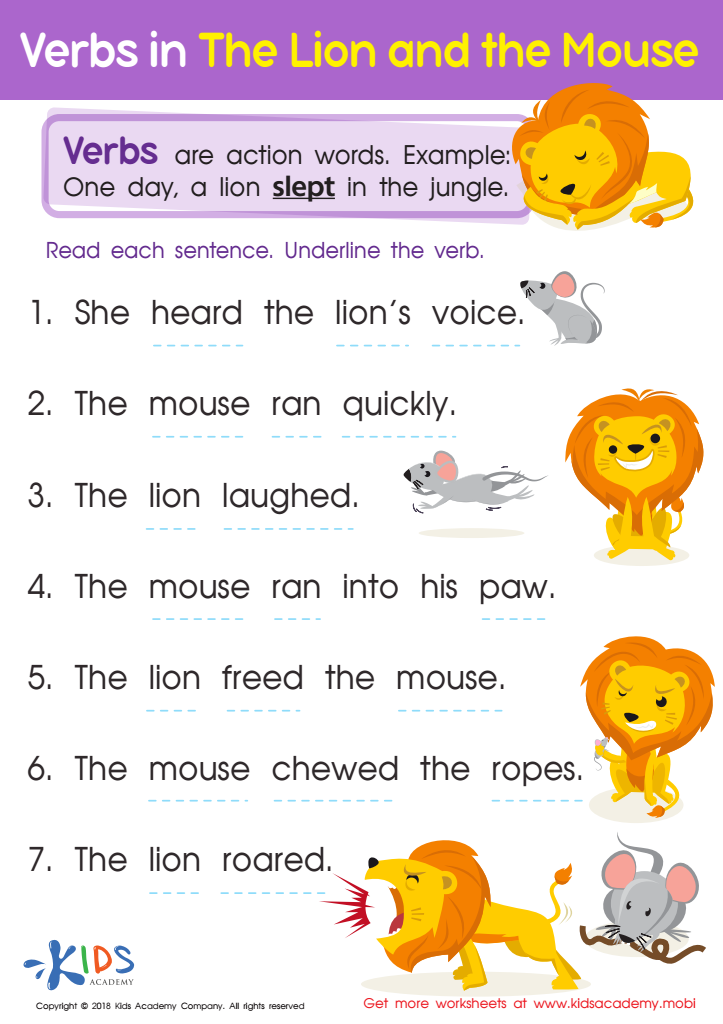

Verbs in The Lion and the Mouse Worksheet
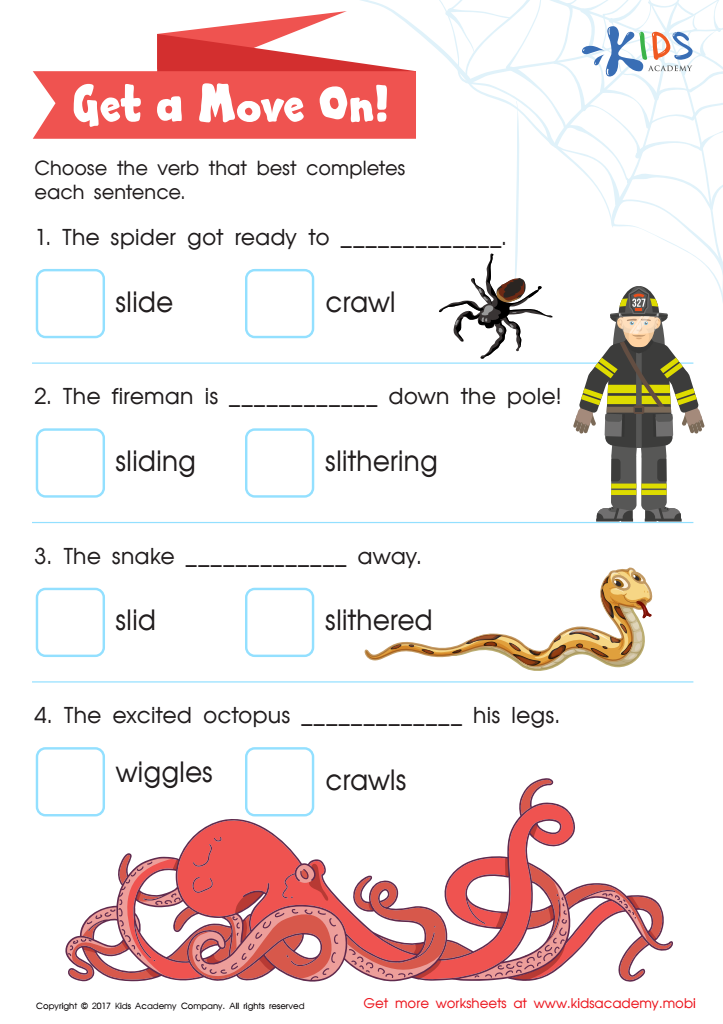

Verb Worksheet
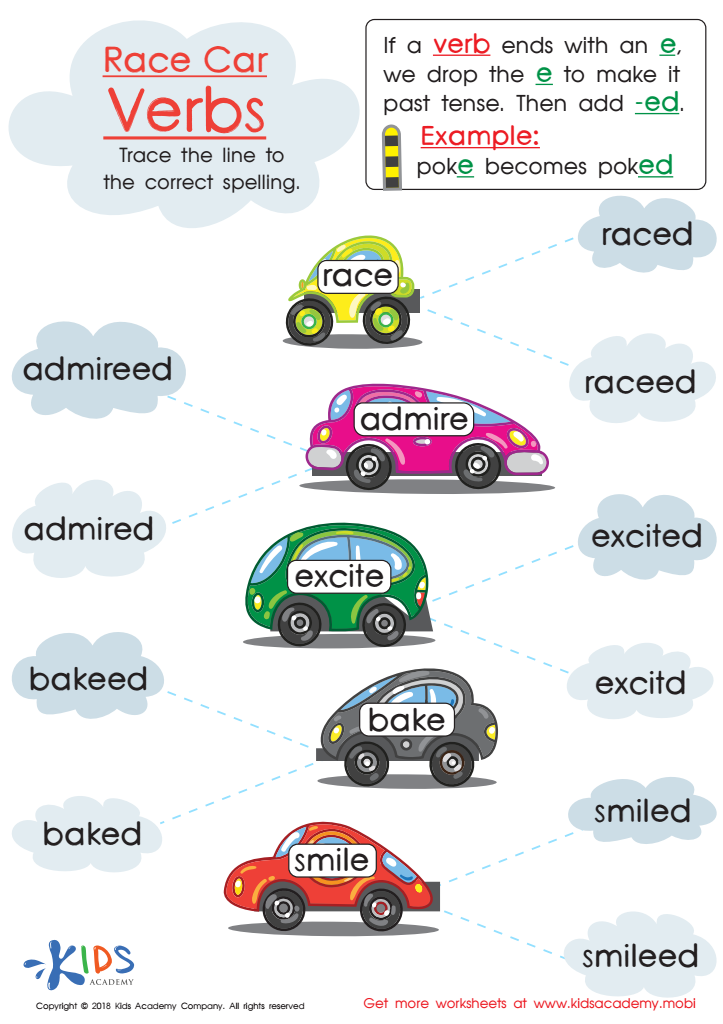

Race Car Verbs Worksheet
Verb identification is a critical skill for children aged 5 to 7 because it lays the foundation for language development, literacy, and overall communication skills. At this stage, children are beginning to build sentences and express their thoughts more clearly, and recognizing verbs helps them understand the action within those sentences. Effective verb identification aids in vocabulary expansion, allowing children to articulate their ideas and feelings more vividly.
Furthermore, mastering verbs enhances reading comprehension. When children can identify actions in texts, they grasp the storyline and character motivations more fully, fostering a love for reading. This also enhances their writing skills, as they learn to use verbs effectively, making their sentences lively and impactful.
Additionally, understanding verbs introduces concepts like tense, which supports grammatical understanding as children progress in their writing and speech. For educators and parents, encouraging verb identification not only supports academic achievement but also builds confidence in communication.
Lastly, engaging children in fun verb-related activities, such as games or storytelling, makes learning interactive and enjoyable, which is vital during these formative years. Supporting verb identification ultimately contributes to overall language proficiency, critical thinking, and effective expression in young learners.
 Assign to My Students
Assign to My Students







